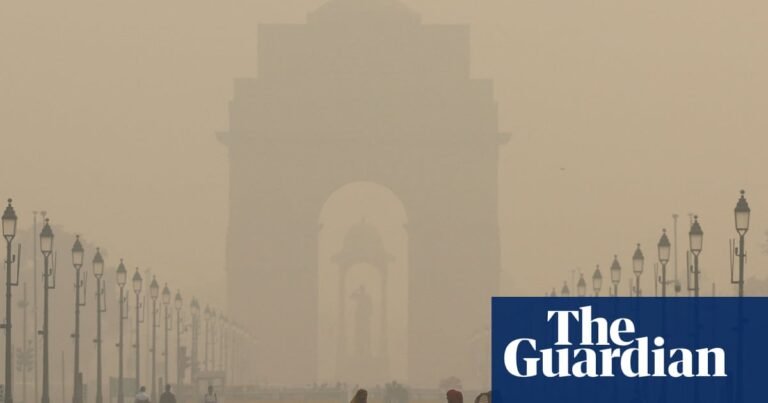The post-monsoon period in Delhi has become a time of smog. In November, the city’s pollution index reached its highest levels, classified as “severe plus”, cloaking the city in thick, brown smog and forcing schools and offices to close.
Prof Andre Prévôt, of the Paul Scherrer Institute, who led a group of scientists investigating the causes, said: “The visibility drops drastically – often to just a few hundred metres – and it feels as if standing in a heavy soup of pollution.
“There’s a persistent burnt smell and the pollution appears palpable. It is a physical experience that goes beyond what numbers alone can convey.”
Dr Kaspar Rudolf Dällenbach, one of the lead scientists, said: “The Indo-Gangetic plain is one of the most polluted regions in the world, where extreme air pollution meets high population density, leading to substantial impacts on public health.”
The research by Dällenbach’s team has confirmed agricultural fires as the main cause of the post-monsoon smog. This comes from farmers setting fire to rice stubble to quickly clear their fields to plant wheat seed and achieve two crops a year.
During the worst smog, the researchers found that particle pollution from agricultural fires accounted for 32% of the daily deaths from air pollution in Delhi and 53% in Kanpur. This amounted to 1,072 attributable deaths in Delhi in November and December, and 259 in Kanpur. Women and older people were the most likely to be affected.
Smog in Delhi often arrives overnight and residents wake up to find their city filled with pollution.
People plant saplings in a paddy field on the outskirts of Bhubaneswar, India. Photograph: Reuters
In the post-monsoon period, the researchers found smog typically started with fires lit during mid-afternoon in the Punjab.
As polluted air travels towards Delhi, it gathers more smoke along the way, reaching the city overnight. Sunlight then causes the pollutants to react together to form further smog, before reaching Kanpur after 24 hours; a total distance of more than 370 miles (600km).
Other sources of pollution included dung, grass and wood burning. This is a common home heating source in rural India and Kanpur was especially affected in the winter.
In Delhi, the researchers found particles from industrial pollution, including chemicals used in the manufacture of plastics, laminates and adhesives, and in recycling electronic waste. Particle pollution from traffic was greatest in Delhi.
The stubble problem is partly caused by a transition to modern mechanical harvesting, but other types of machinery may be the answer. One such device is the “happy seeder”. Towable behind most types of tractor, it can plant wheat without first clearing rice stubble and tilling the soil. The rice stubble is retained, rather than burned, and improves soil fertility and water retention.
The government is subsidising these new types of machinery but farmers need more support to become confident with their use.
